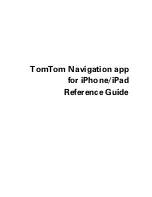
STP Commands
ExtremeWare XOS 11.5 supports only the Summit X450 family of switches and the BlackDiamond 8800 series switch.
ExtremeWare XOS 11.5 Command Reference Guide
1164
MSTP uses RSTP as its converging algorithm and is interoperable with the legacy STP protocols: STP
(802.1D) and RSTP (802.1w).
Spanning Tree Domains
The switch can be partitioned into multiple virtual bridges. Each virtual bridge can run an independent
Spanning Tree instance. Each Spanning Tree instance is called a Spanning Tree Domain (STPD). Each
STPD has its own root bridge and active path. After an STPD is created, one or more VLANs can be
assigned to it.
A port can belong to multiple STPDs. In addition, a VLAN can span multiple STPDs.
The key points to remember when configuring VLANs and STP are:
●
Each VLAN forms an independent broadcast domain.
●
STP blocks paths to create a loop-free environment.
●
Within any given STPD, all VLANs belonging to it use the same spanning tree.
Member VLANs
When you add a VLAN to an STPD, that VLAN becomes a member of the STPD. The two types of
member VLANs in an STPD are:
●
Carrier
●
Protected
Carrier VLAN.
A carrier VLAN defines the scope of the STPD, which includes the physical and logical
ports that belong to the STPD and if configured, the 802.1Q tag used to transport Extreme Multiple
Instance Spanning Tree Protocol (EMISTP) or Per VLAN Spanning Tree (PVST+) encapsulated Bridge
Protocol Data Units (BPDUs). Only one carrier VLAN can exist in a given STPD, although some of its
ports can be outside the control of any STPD at the same time.
NOTE
If you use EMISTP or PVST+, the StpdID must be identical to the VLANid of the carrier VLAN in that STPD.
If you have an 802.1D configuration, Extreme Networks recommends that you configure the StpdID to
be identical to the VLANid of the carrier VLAN in that STPD.
If you configure MSTP, you do not need carrier VLANs for MSTP operation. With MSTP, you configure
a CIST that controls the connectivity of interconnecting MSTP regions and sends BPDUs across the
regions to communicate the status of MSTP regions. All VLANs participating in the MSTP region have
the same privileges.
Protected VLAN.
Protected VLANs are all other VLANs that are members of the STPD. These VLANs
“piggyback” on the carrier VLAN. Protected VLANs do not transmit or receive STP BPDUs, but they
are affected by STP state changes and inherit the state of the carrier VLAN. Protected VLANs can
participate in multiple STPD, but any particular port in the VLAN can belong to only
one
STPD. Also
known as non-carrier VLANs.
If you configure MSTP, all member VLANs in an MSTP region are protected VLANs. These VLANs do
not transmit or receive STP BPDUs, but they are affected by STP state changes communicated by the
















































